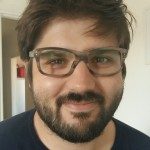Link to Pubmed [PMID] – 22172669
Dev. Cell 2011 Dec;21(6):1005-13
During preimplantation mouse development, the inner cell mass (ICM) differentiates into two cell lineages–the epiblast and the primitive endoderm (PrE)–whose precursors are identifiable by reciprocal expression of Nanog and Gata6, respectively. PrE formation depends on Nanog by a non-cell-autonomous mechanism. To decipher early cell- and non-cell-autonomous effects, we performed a mosaic knockdown of Nanog and found that this is sufficient to induce a PrE fate cell autonomously. Strikingly, in Nanog null embryos, Gata6 expression is maintained, showing that initiation of the PrE program is Nanog independent. Treatment of Nanog null embryos with pharmacological inhibitors revealed that RTK dependency of Gata6 expression is initially direct but later indirect via Nanog repression. Moreover, we found that subsequent expression of Sox17 and Gata4–later markers of the PrE–depends on the presence of Fgf4 produced by Nanog-expressing cells. Thus, our results reveal three distinct phases in the PrE differentiation program.
